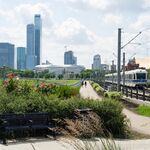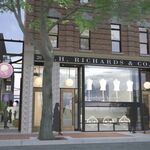IanO
Superstar
Those fees are not outrageous given the size of the unit and age. High, sure, but not crazy.
Seeing fees like this makes me thankful that my building and our board have aggressively tackled the issues with our building through assessments for a few years and didn't skimp out or ignore anything. Everything's been quiet recently and our only small fee increases in the past couple years have been related to inflation and increased security measures.$715/mo condo fees...that'd be easily 2/3 your mortgage payment on that place w/ 5% down
it's an interesting philosophical difference isn't it?Most 'quality' or amenity rich buildings are going to be $.40-.50/sqft or $400-500/1000sqft when new. Responsible boards should raise fees by inflation +1-2%/yr (rule of thumb) and that builds over each and every year and so a building from the 90s or early 2000s will have higher fees.
This also assumes near or full funding of their Reserve Fund based on their 5yr (mandated) study, but usually is underfunded and with deferred maintenance.
It is interesting for sure. My building wasn’t very well built to be honest, but the board has done a great job addressing issues and engineering around our problems. My fees are around $450/mth and covers everything minus electrical and our reserve fund is a bit ahead of the curve.it's an interesting philosophical difference isn't it?
in a single family home, most of us will work hard to be "ahead of the curve" when it comes to maintenance and replacement/repair recognizing that those expenditures result in a better living environment and enhance long-term values.
in a condo most boards are primarily concerned keeping monthly costs as low as possible and will postpone those same investments (and postpone building up and maintaining an adequate reserve fund for them) as long as possible even though that simply makes them more expensive when they finally can't be put off any longer. the underfunded reserve accounts then lead to special assessments and minimal rather than optimal amounts and quality of work even when it is done. the result is an erosion of value rather than an enhancement of value.
I'd suspect not good. This spot has been very troubled for more or less the last decade. The only thing materially changing now is Five Oaks is trying to sell the spot instead of just leasing it. I talked to a rep from Five Oaks about six weeks ago and he said there was a deal pending but I'm guessing at the very least it hasn't closed yet, or worse fell apart.What are the odds that The Keg or another high-profile restauranteur is taking a long hard look at this Rice Howard Way location?
View attachment 461803
So if I read these assorted charts and figures correctly, it seems like the downtown population has increased from around 5,000 in 1986 to around 18,000 now.
They show, however, that it has decreased from 2014 to now, and is projected to hover around 20k for decades ahead of us, if we don't do something. Clearly 20k is not enough to support a vibrant and healthy downtown, especially with the arise of WFH in such a large scale, post pandemic. I suspect, judging by the current state of affairs, that somewhere around 1.5 to 2x the current population, over time, would be what we need to finally have the downtown most of us here would love to see.So if I read these assorted charts and figures correctly, it seems like the downtown population has increased from around 5,000 in 1986 to around 18,000 now.
Yet I hear so much whining about how our downtown population is stagnant. An increase of over 300% does not seem stagnant to me. Maybe the future will not be as good, but that is hard to predict and many predictions end up being wrong. Anyways, it seems like it is not as bad as the current general mood of doom and gloom would seem to indicate.
I mean, someone in mid life (40) at the time would be close to the average life expectancy at this point… (late 70s).So if I read these assorted charts and figures correctly, it seems like the downtown population has increased from around 5,000 in 1986 to around 18,000 now.
Yet I hear so much whining about how our downtown population is stagnant. An increase of over 300% does not seem stagnant to me. Maybe the future will not be as good, but that is hard to predict and many predictions end up being wrong. Anyways, it seems like it is not as bad as the current general mood of doom and gloom would seem to indicate.
You missed the part where I mentioned the rise of WFH in large scale, meaning a SEVERE reduction on the working population commuting to downtown every day. Not to mention other things, like the insane growth in popularity of the WEM or the rapid growth of areas like Windermere, for example. The downfall of the big department stores also dealt a massive blow, as those stores were a huge draw for food traffic, especially to the ECC. We also tore down a bunch of older buildings that had small, established businesses that couldn't afford to wait for the replacements to be built, or to come back there with the higher lease rates...Yet I was here in 1986, when only 5,000 people lived downtown and it seemed fairly vibrant, certainly with a lot more retail businesses than now.
If increasing population was the key to vibrancy, then logically we should be more vibrant now than than in 2009 and in 1986, but it sure doesn't seem like it.
I don't think some arbitrary population number above what we currently have is the magic solution to everything, nor should the possibility it may not happen (although the future is hard to predict) cause us to fall into total despair.




